Erwin Hernandez
Charlie Reardon
Terry Yuan
Laurent Fu
Problem
We chose to solve the problem of grocery stores in smaller college towns not having as many culturally diverse meal and product options despite the generally diverse population of students. We first brainstormed ideas for who we wanted our stakeholders to be, which we narrowed down to college students from diverse backgrounds. In order to find out what problem to solve, we asked a group of Lafayette students what they thought about grocery stores in the area and if they felt as though the stores had options for cultural foods they were used to. We also referenced our own experiences with grocery stores in the general area around Lafayette as well as at home.
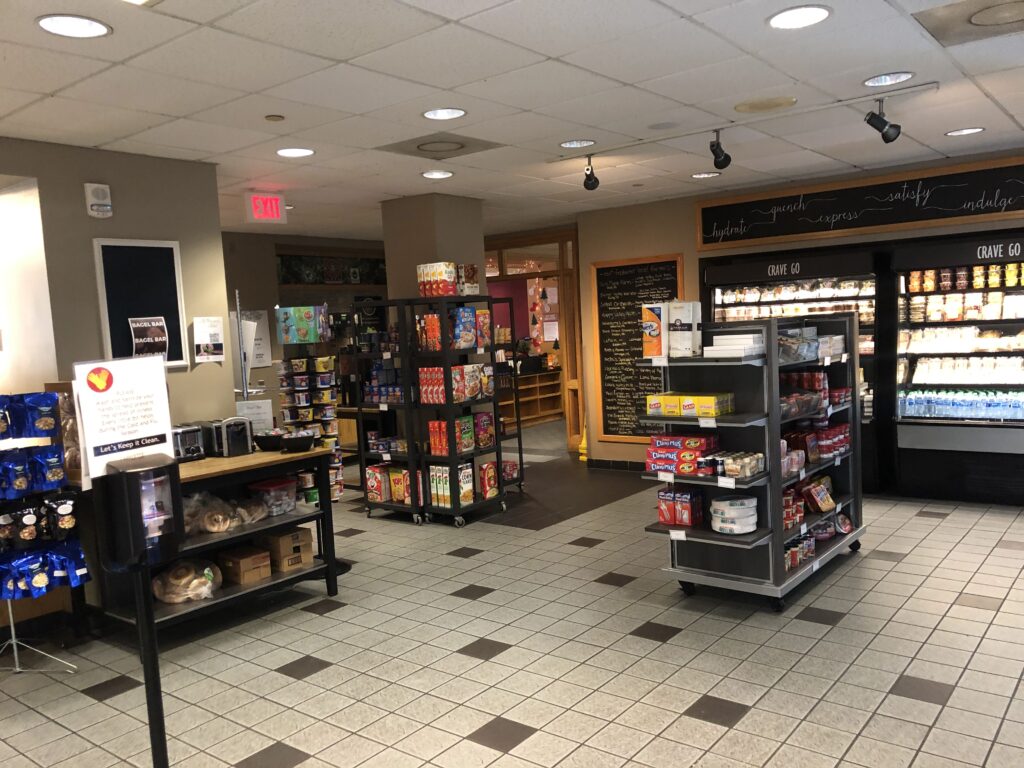
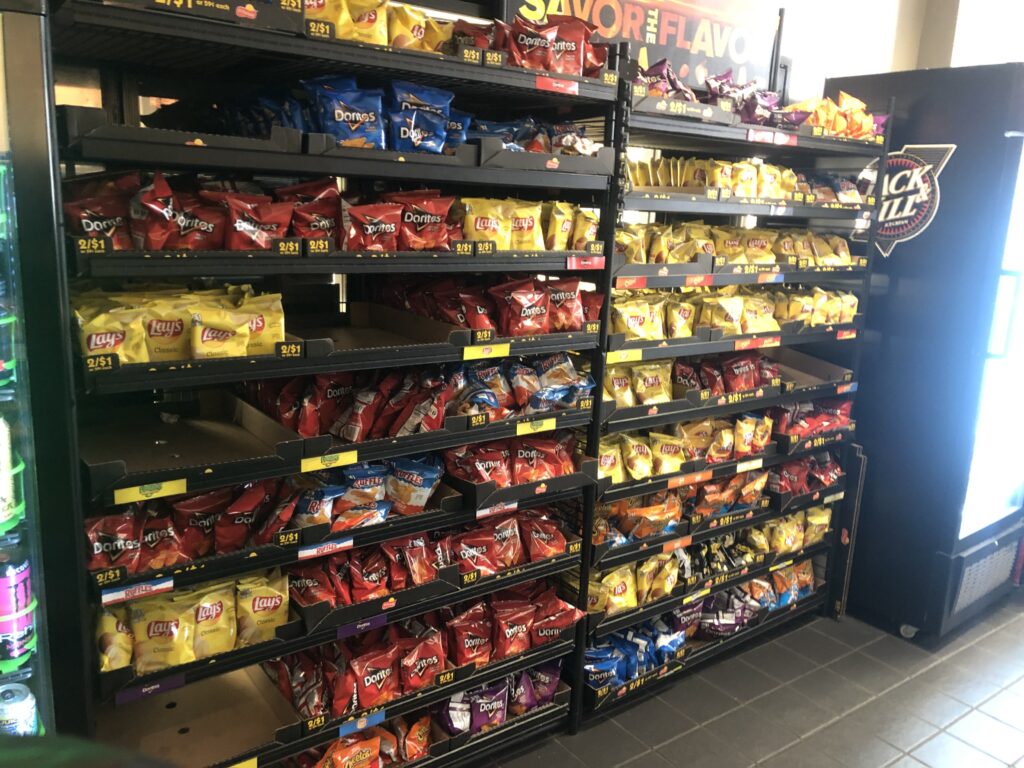
Who Are We Designing For?
We are designing for Lafayette college students from different cultural and economic backgrounds who need to cook meals for themselves throughout the week. Though our persona depicts a specific race and gender, the main emphasis is that they are a college student of average economic status. We are not designing for permanent residents of Easton or faculty and staff from Lafayette. We are also not designing for the owners of the store or its employees. Throughout the process, we took into account certain accommodations that would make our designs more universally accessible, such as dietary restrictions, difficulty with reading, and mobility issues – though by our last iteration the main focus was making our solution legible and understandable.
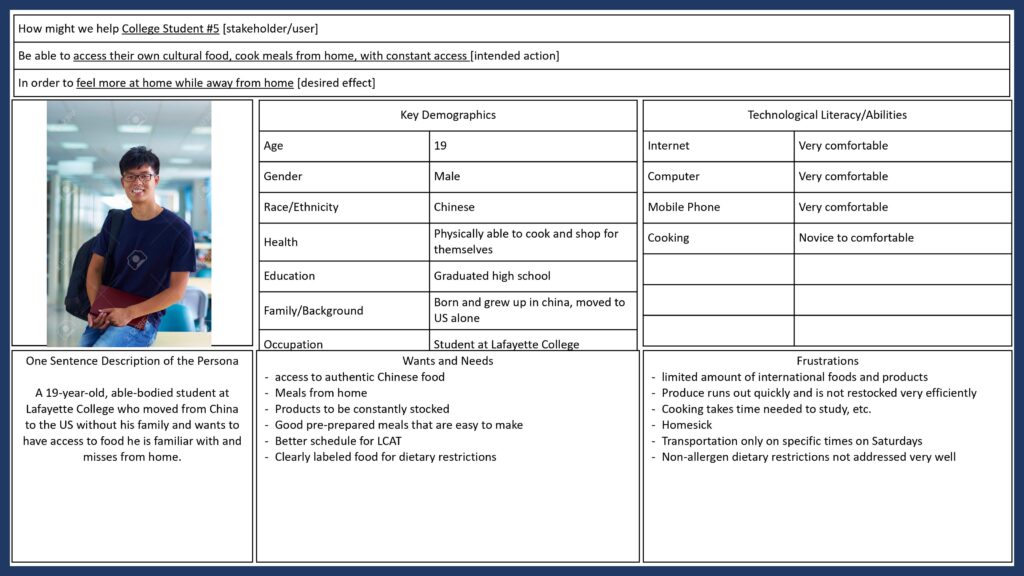
Design Process
Because our problem was fairly abstract and had many facets, we first decided on which part of the problem we wanted to solve the most. We then brainstormed some solutions for the problem and started work on narrowing the list down. We landed on designing a floor plan of a bodega as well as a way to expose college students to a variety of international meals that they could prepare in a short amount of time. However, because it is very difficult to test the effectiveness of the layout of an entire store or meal prep boxes with our limited time and resources, we decided to design the recipe card that would be included in a potential meal prep box. This way, we could have our classmates assess the legibility and approachability of the cards. Our two rounds of testing focused on the font and format of the cards. We wanted to make them simple enough so that the recipe wouldn’t seem overwhelming, but still have enough information to make a good meal and improve the user’s cooking skills. The idea is that the recipes would rotate on a schedule, with each one being from a different culture. However, we just made one card as an example.
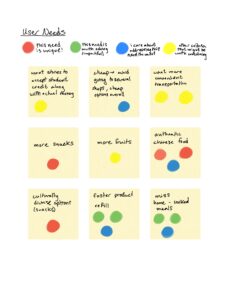
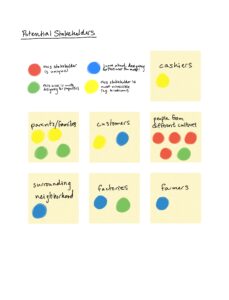
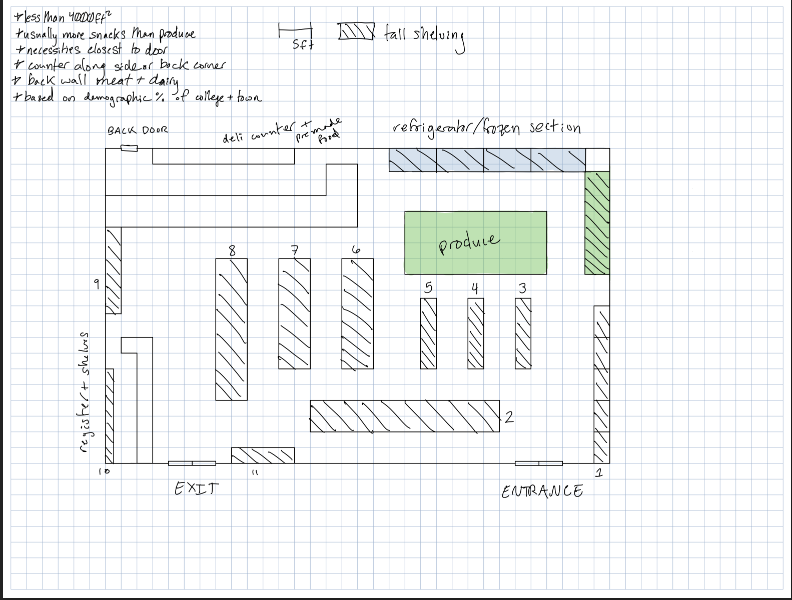

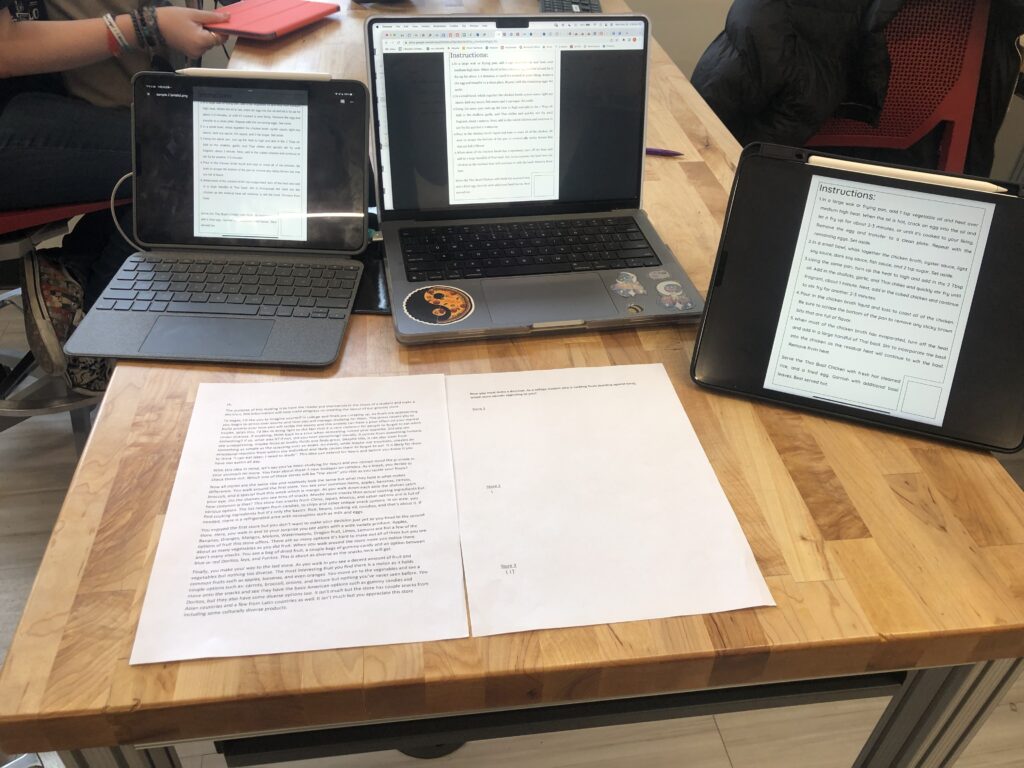
Testing
As stated previously we initially wanted to prototype the interior of our grocery store. We wanted to test this by asking people their opinions on the design we would give them. When actually attempting this we discovered it was more challenging than we thought and getting the results we wanted would take a lot of extra time and effort that we couldn’t afford. When designing our grocery store we wanted to create a welcoming atmosphere that would promote quick and efficient shopping. This was something we kept in mind when we decided to prototype recipe cards rather than the interior of the store. In our first iteration we decided to test the font to see which was the easiest to read, After that, we decide to test the format of our recipe cards to see which one was the most approachable. With this, we were able to find a design that we thought to be the easiest to approach.
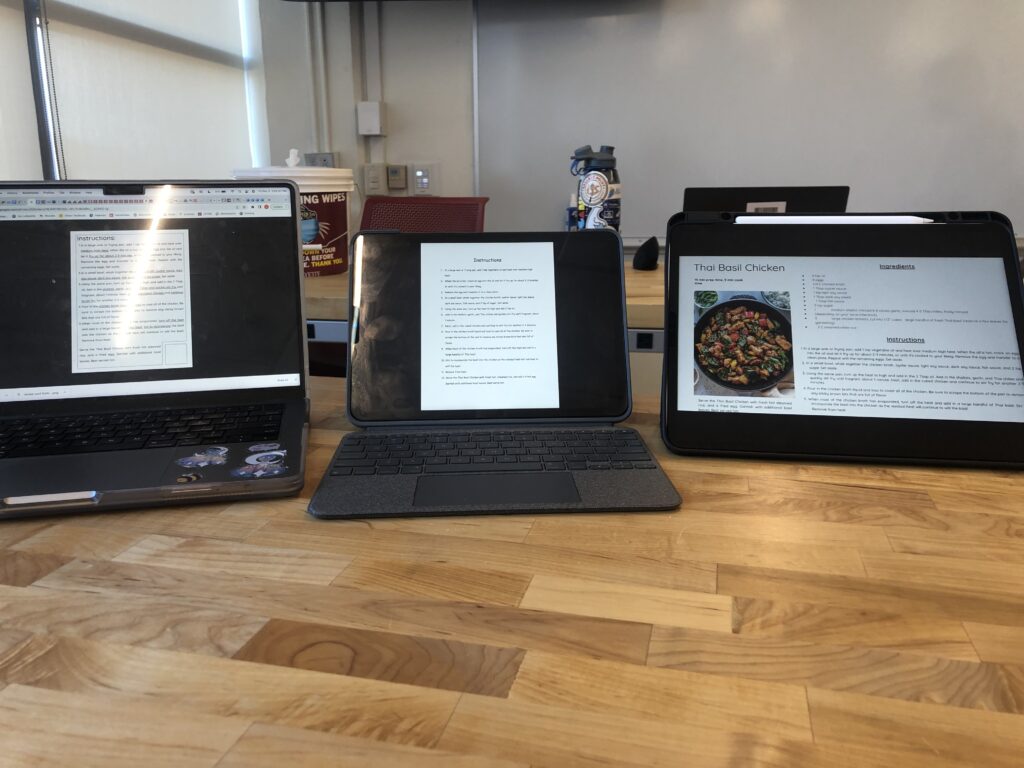
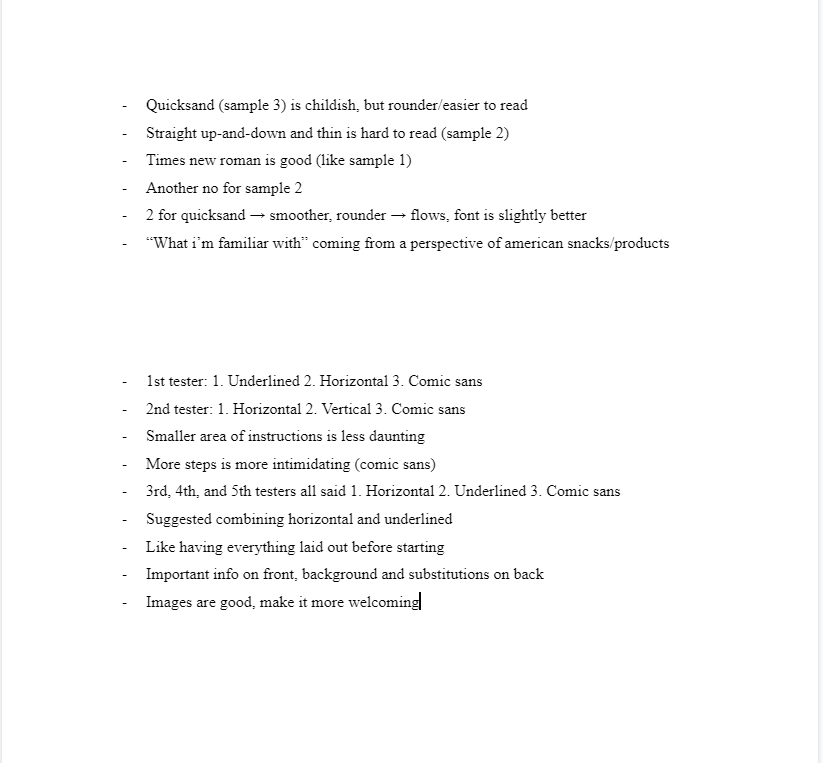
Final Product
Our final solution is a recipe card that would potentially be included in take-and-make meal boxes. The card itself is double sided, with one side containing an image of the final meal, utensils and ingredients needed, and instructions. The other side contains background information about the recipe as well as potential substitutions of ingredients. The recipe itself is fairly simple and takes under half an hour to cook, even without pre-prepared ingredients from a meal box. We know that our solution works because, for one thing, access to cultural recipes in a simple format means the objective of including more diverse cultural food in the grocery store was successful. Even without needing to stock international products, students will have access and exposure to more diverse meals.
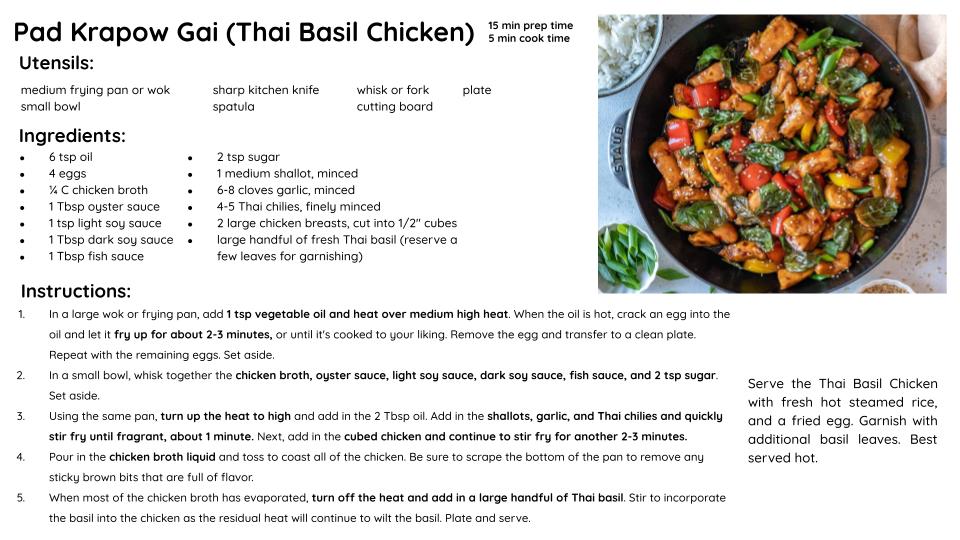
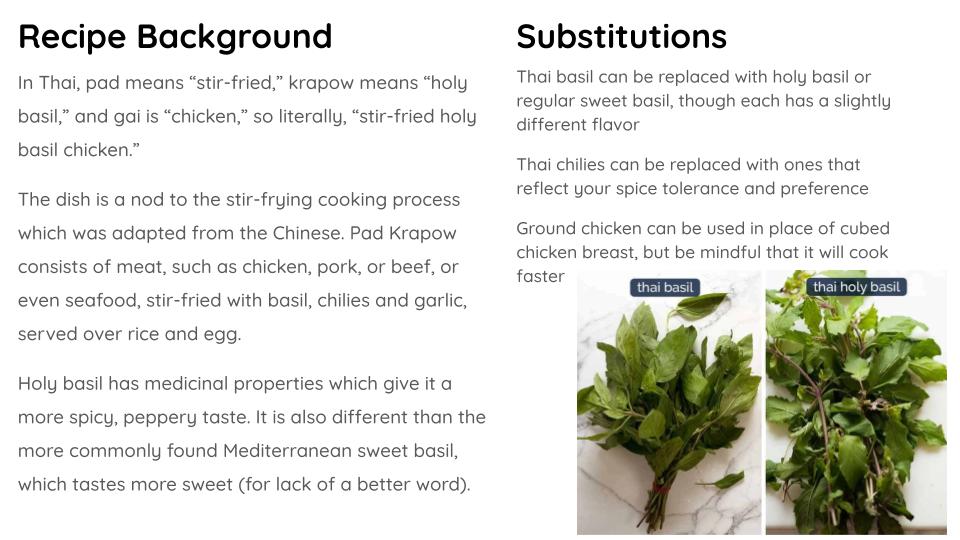
Team Summary
Overall, there was a lot of room for improvement when it came to how our team worked together but one thing that always went well was our discussions in class. When in class our group always made sure to stay on task and when urged, they would always give great insight. This project was quite challenging though when it came to adjusting to the freedom given in our project. This was a seven-week project which made it feel easy but there were a lot of deliverables that were met throughout that seven-week progress. We believe this formed some miscommunication when it came to prioritizing our design since we thought we had time. For future reference, we’d like to correct this by emphasizing communication more throughout the design process. Communication when meeting deliverables, communication when working in the field, and communication when working with each other.